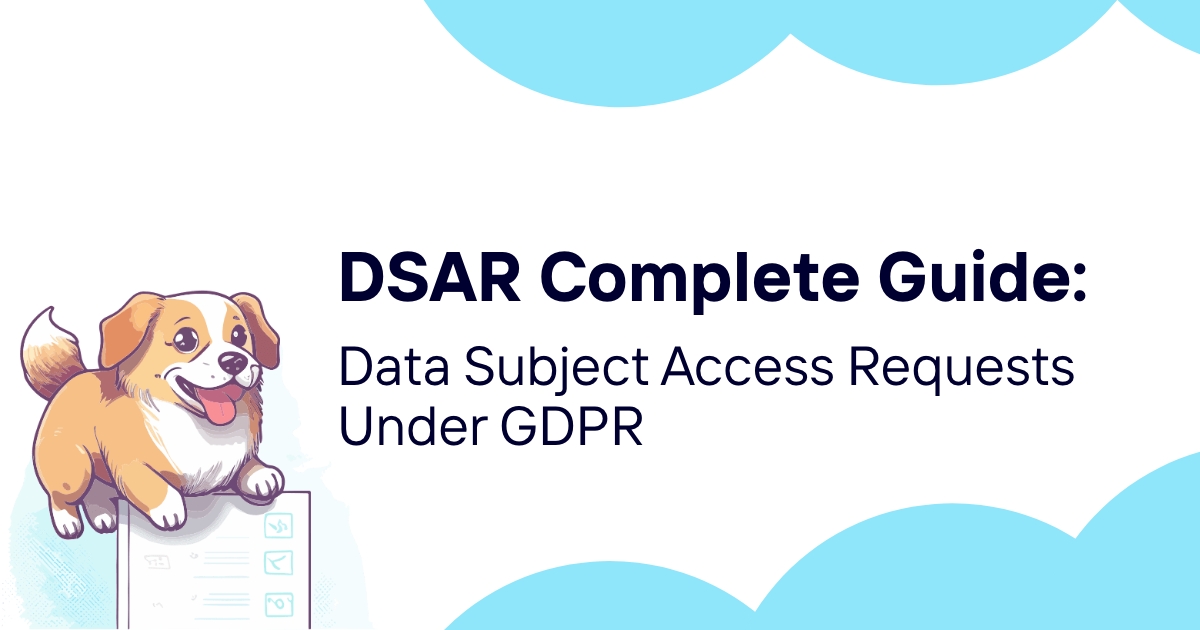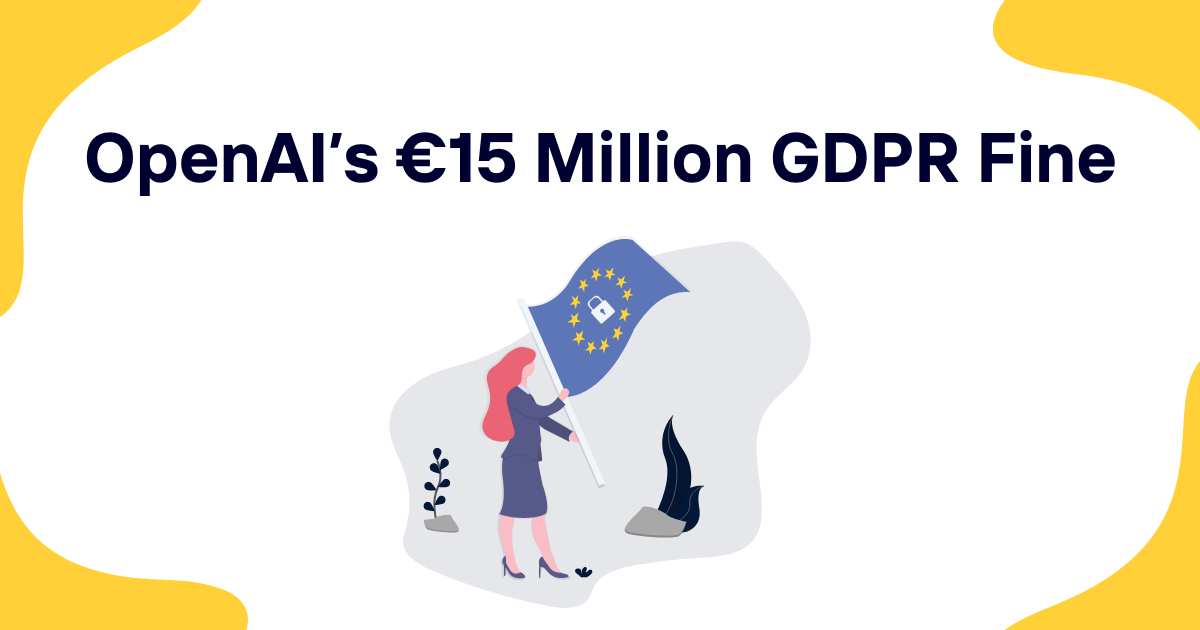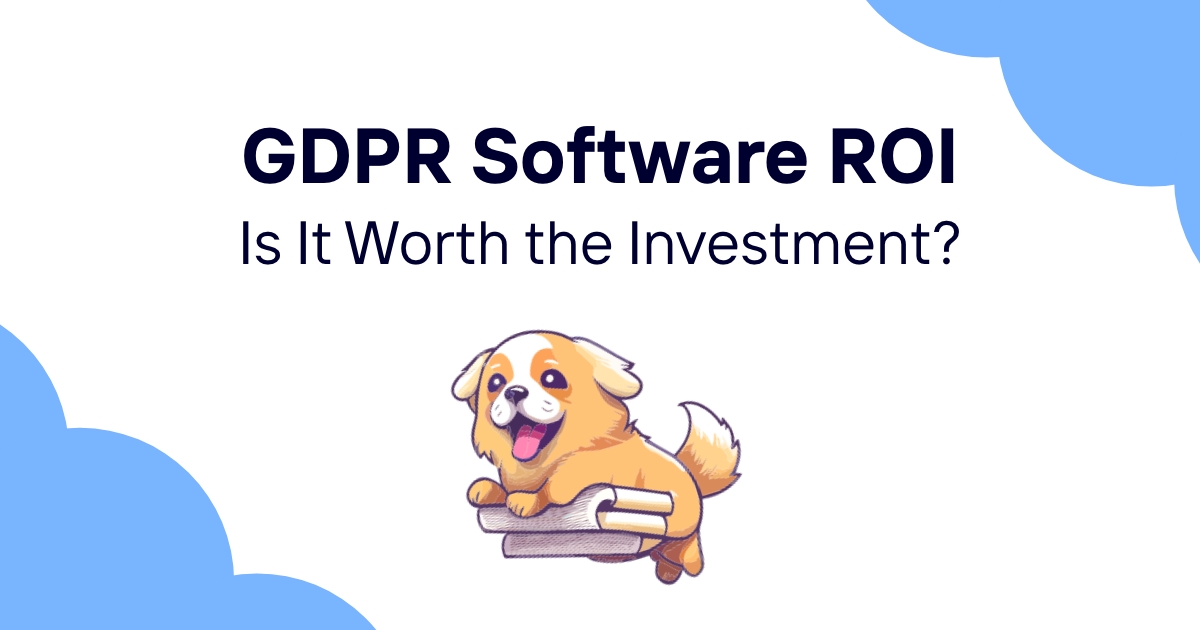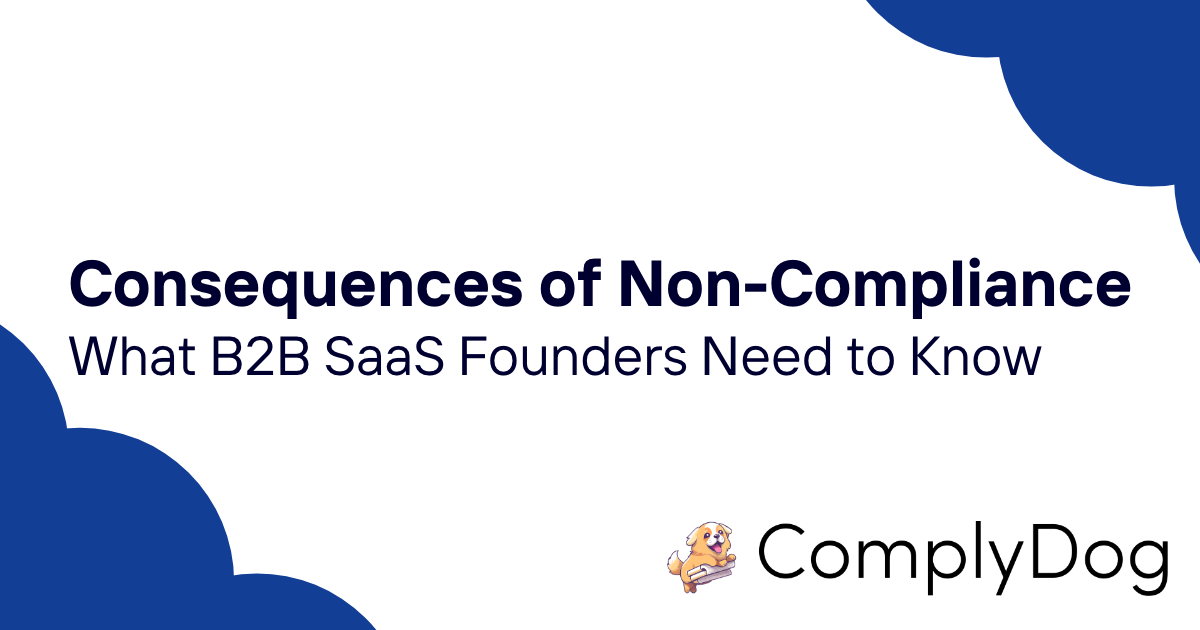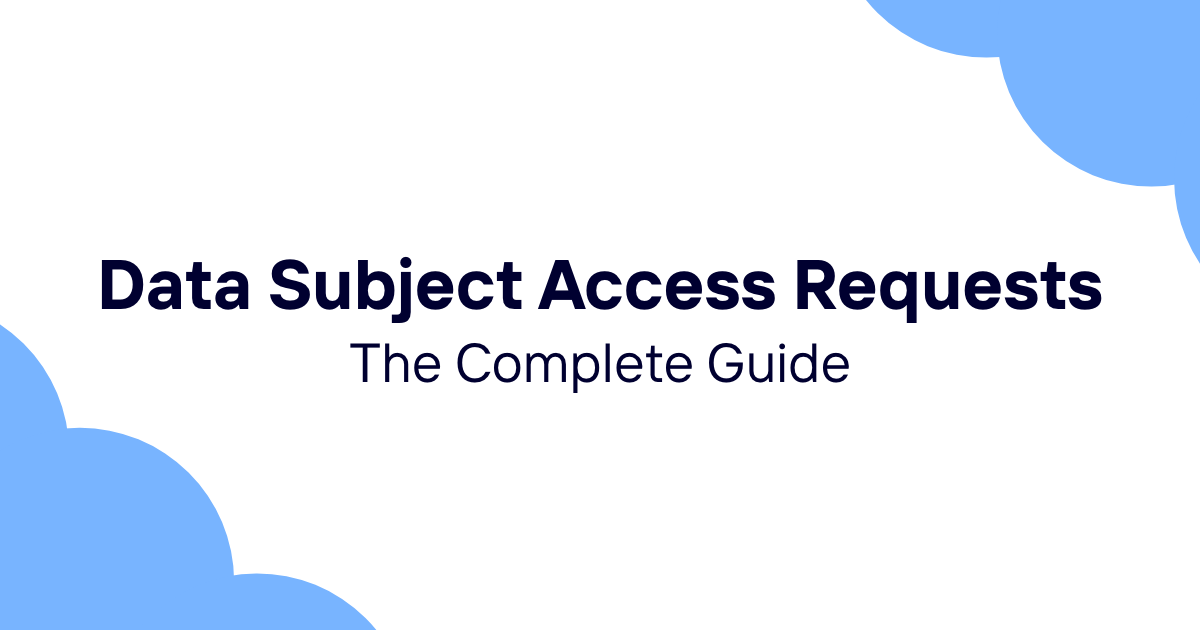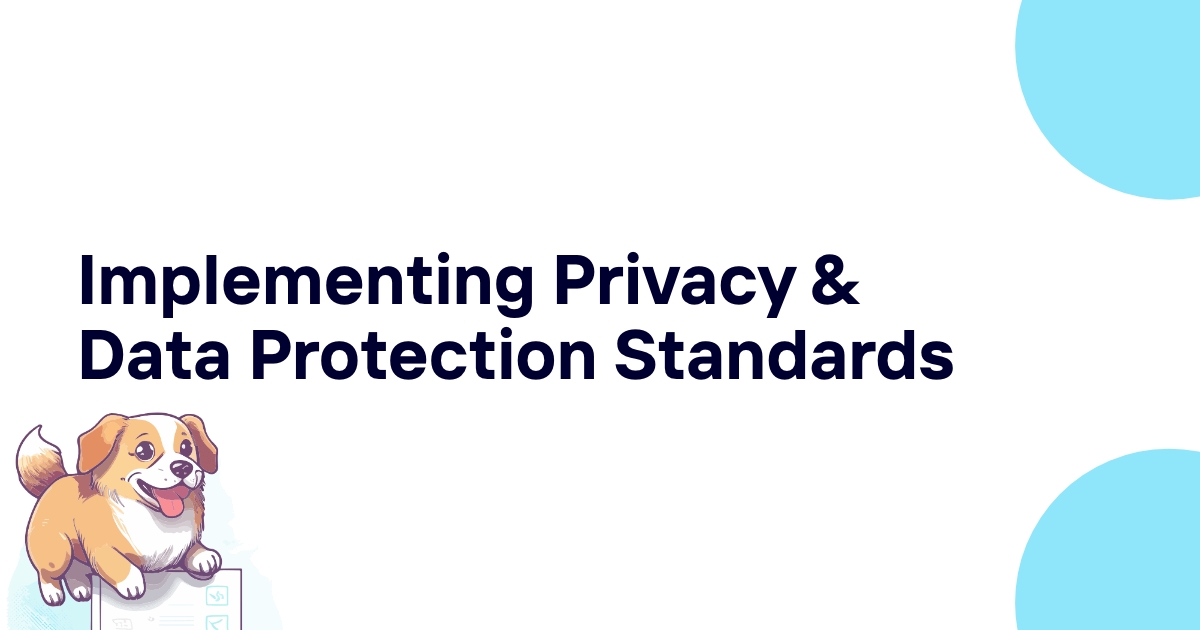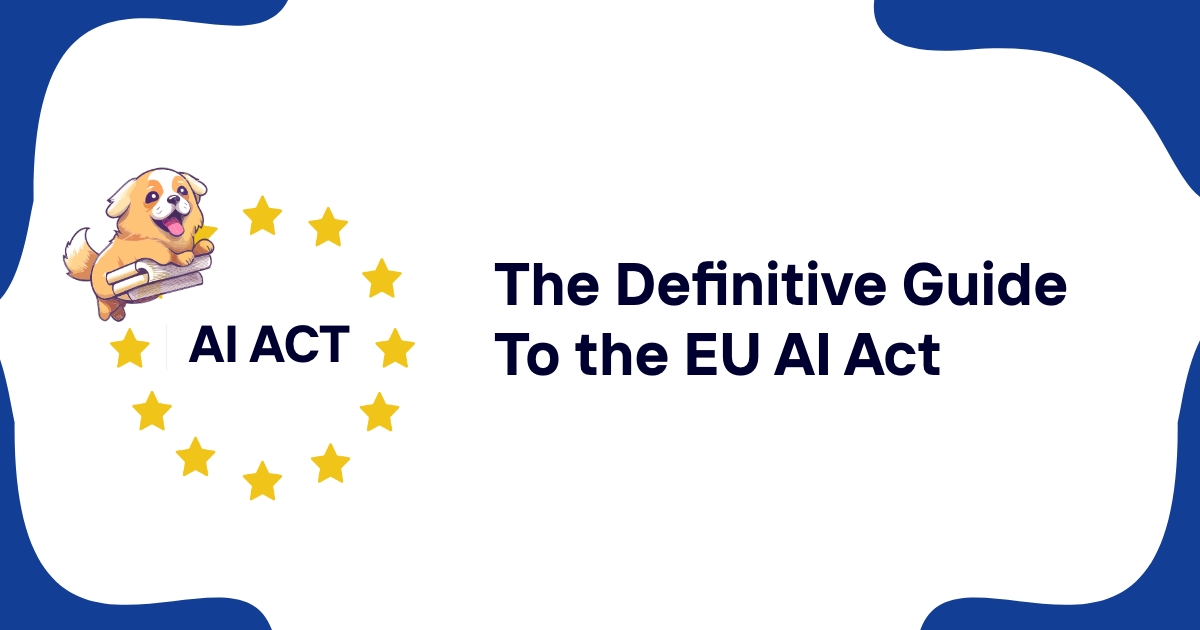Data Subject Access Requests (DSARs) represent one of the most important individual rights under the General Data Protection Regulation. For software companies processing personal data of European users, handling DSARs isn't optional – it's a legal requirement that can significantly impact your business operations.
This comprehensive guide explains everything you need to know about DSARs, from basic legal requirements to advanced automation strategies. Whether you're handling your first data subject request or looking to streamline existing processes, understanding DSAR compliance is essential for maintaining GDPR compliance and customer trust.
What is a Data Subject Access Request (DSAR)?
A Data Subject Access Request (DSAR) is a formal request from an individual asking to see what personal data a company holds about them and how that data is being processed. Think of it as giving people the right to peek behind the curtain and understand exactly how companies handle their personal information.
Under GDPR, individuals have the fundamental right to know what personal data organizations collect, why they collect it, and how they use it. DSARs provide the mechanism for exercising this transparency right.
Core Components of DSAR Rights
Data subject access rights encompass several specific elements that companies must address:
Data Confirmation: Confirming whether you process the individual's personal data at all.
Data Access: Providing a copy of the personal data you hold about the requesting individual.
Processing Information: Explaining the purposes of processing, categories of personal data involved, and recipients of the data.
Retention Periods: Informing individuals how long you plan to store their personal data or the criteria used to determine retention periods.
Data Sources: Explaining where you obtained the personal data if it wasn't collected directly from the individual.
Automated Decision-Making: Providing information about any automated decision-making or profiling that affects the individual.
DSAR vs Other Data Rights
DSARs are just one of several individual rights under GDPR. Understanding how access requests relate to other data rights helps companies build comprehensive response systems:
Right to Rectification: Requests to correct inaccurate personal data, which may follow initial access requests that reveal data quality issues.
Right to Erasure: "Right to be forgotten" requests that often require similar data discovery processes as access requests.
Right to Restrict Processing: Requests to limit how companies process personal data, which requires understanding current processing activities.
Right to Data Portability: Requests for data in machine-readable formats, which overlap significantly with access request requirements.
Business Impact of DSARs
Beyond legal compliance, DSARs affect multiple aspects of business operations:
Resource Requirements: Processing access requests requires staff time, technical resources, and coordination across departments.
System Dependencies: Effective DSAR responses require understanding data flows across all business systems and third-party integrations.
Customer Relationships: How companies handle access requests directly impacts customer trust and satisfaction.
Competitive Advantage: Efficient DSAR processes demonstrate strong data governance and can differentiate companies in privacy-conscious markets.
DSAR Legal Requirements Under GDPR
GDPR establishes specific legal obligations for handling data subject access requests. Understanding these requirements helps companies build compliant response processes while avoiding costly penalties.
Mandatory Response Elements
Every DSAR response must include specific information to meet GDPR requirements:
Processing Purposes: Clear explanation of why you process the individual's personal data and the legal basis for each processing purpose.
Data Categories: Description of the types of personal data you hold, from basic identifiers to more sensitive information categories.
Recipient Information: Details about who receives the personal data, including third-party processors, business partners, and international transfers.
Storage Periods: Information about how long you retain different types of personal data and the criteria used to determine retention periods.
Individual Rights: Explanation of the person's rights regarding their data, including rectification, erasure, restriction, and portability options.
Complaint Procedures: Information about how individuals can file complaints with supervisory authorities if they're unsatisfied with your response.
Response Timeframes
GDPR establishes strict timelines for DSAR responses that companies must meet regardless of request complexity:
Standard Timeline: One month from receipt of a valid request, with the clock starting when you have sufficient information to identify the individual and their data.
Extension Provisions: Two additional months for complex requests or high request volumes, but only with proper justification and notification to the individual.
Timeline Calculation: Working days versus calendar days, and how holidays and weekends affect response deadlines.
Early Response Benefits: Advantages of responding ahead of deadlines and how quick responses improve customer relationships.
Identity Verification Requirements
Protecting personal data requires verifying that DSAR requesters are authorized to receive the information:
Reasonable Measures: GDPR requires "reasonable measures" to verify identity without creating excessive barriers to legitimate requests.
Verification Methods: Common approaches including email confirmation, account authentication, and document verification.
Fraud Prevention: Balancing accessibility with protection against fraudulent requests that could lead to unauthorized data disclosure.
Third-Party Requests: Special procedures for requests made through legal representatives, family members, or other authorized parties.
Fee Structures and Exemptions
While most DSARs must be processed free of charge, specific circumstances allow for fees:
Free Response Rule: The general principle that individuals shouldn't pay for exercising their fundamental rights to data access.
Excessive Request Fees: Limited circumstances where reasonable fees can be charged for manifestly unfounded or excessive requests.
Additional Copy Charges: Fees for additional copies beyond the first free copy, though many companies waive these charges for customer relations.
Administrative Costs: Understanding what costs companies can and cannot recover through DSAR response fees.
As outlined in our PII data protection guide, effective DSAR responses require comprehensive understanding of what personal data you hold and where it's stored across your systems.
Step-by-Step DSAR Process Guide
Implementing an effective DSAR response process requires systematic approaches that ensure compliance while managing operational efficiency. Here's a detailed breakdown of each process step:
Request Receipt and Initial Assessment
The DSAR process begins when you receive a request through any communication channel:
Multi-Channel Reception: Individuals can submit DSARs through email, contact forms, phone calls, postal mail, or even social media. Your process must capture requests regardless of how they arrive.
Request Logging: Create detailed records of each request including receipt date, communication channel, requester information, and initial request scope.
Validity Assessment: Determine whether the communication constitutes a valid DSAR requiring formal response or falls into other categories like customer service inquiries.
Urgency Evaluation: Identify requests that might require expedited handling due to special circumstances or potential legal implications.
Identity Verification Process
Confirming requester identity protects both the individual's privacy and your company's legal obligations:
Initial Verification: Use information already available through existing customer accounts or previous communications to verify identity.
Document Requests: When additional verification is needed, request specific documents that prove identity without creating excessive barriers.
Authentication Methods: Implement secure authentication processes that balance security requirements with user accessibility.
Verification Documentation: Maintain records of verification steps taken and approval decisions for audit purposes.
Data Discovery and Collection
Locating all relevant personal data requires systematic searches across your entire technology environment:
Database Queries: Search structured databases using known identifiers like email addresses, account numbers, or customer IDs.
System Integration Review: Check all connected systems, third-party services, and data processing platforms that might contain relevant personal data.
Backup and Archive Searches: Include backup systems, archived data, and disaster recovery environments in your search scope.
Unstructured Data Review: Search documents, emails, chat logs, and other unstructured data sources that might contain personal information.
Data Compilation and Review
Once you've located relevant data, compile and review it for DSAR response preparation:
Data Aggregation: Combine information from multiple sources into comprehensive datasets while maintaining accuracy and completeness.
Legal Privilege Review: Identify any information that might be subject to legal professional privilege or other disclosure exemptions.
Third-Party Data Assessment: Determine whether your response includes personal data about other individuals that requires redaction or separate consent.
Data Quality Verification: Review collected information for accuracy, completeness, and currency before inclusion in responses.
Response Preparation and Delivery
Creating clear, comprehensive DSAR responses requires attention to both legal requirements and user experience:
Response Format: Prepare responses in accessible formats that meet GDPR requirements while remaining user-friendly.
Data Presentation: Organize information logically with clear explanations of data categories, processing purposes, and retention periods.
Technical Information: Include required technical details about processing activities, legal bases, and individual rights in understandable language.
Delivery Methods: Use secure delivery methods that protect personal data during transmission while ensuring the individual receives their response.
DSAR Timeline and Response Requirements
Meeting GDPR timelines requires understanding both legal requirements and practical implementation challenges that can affect response speed.
Standard Response Timeline
GDPR's one-month response requirement seems straightforward but involves several important considerations:
Timeline Start Date: The clock begins when you receive sufficient information to process the request, not necessarily when you first hear from the individual.
Business Days vs Calendar Days: GDPR uses calendar days, meaning weekends and holidays count toward your response deadline.
International Considerations: Different countries may have varying interpretation of timeline requirements, particularly for cross-border requests.
Timeline Communication: Best practices for acknowledging receipt and communicating expected response times to requesters.
Extension Circumstances
Complex requests may qualify for timeline extensions under specific conditions:
Complexity Criteria: Understanding what constitutes sufficient complexity to justify extension periods.
Volume Considerations: How multiple simultaneous requests from the same individual affect timeline calculations.
Extension Notification: Required communications to individuals when invoking extension provisions.
Extension Documentation: Record-keeping requirements for extension decisions and justifications.
Response Quality Standards
Meeting deadlines while maintaining response quality requires balancing speed with thoroughness:
Completeness Requirements: Ensuring responses include all required information elements while meeting timeline constraints.
Accuracy Standards: Verification procedures that ensure response accuracy without causing unnecessary delays.
Clarity Expectations: Presenting complex technical information in formats that ordinary individuals can understand.
Follow-Up Procedures: Handling questions or concerns that arise after initial response delivery.
Timeline Management Best Practices
Effective timeline management requires proactive approaches and system support:
Early Warning Systems: Automated alerts that notify teams about approaching deadlines and required actions.
Resource Allocation: Staffing plans that ensure adequate resources are available for timely response processing.
Priority Management: Systems for handling multiple concurrent requests while maintaining timeline compliance.
Escalation Procedures: Clear protocols for addressing requests that risk missing deadline requirements.
Common DSAR Request Types and Examples
Understanding typical DSAR patterns helps companies prepare for common scenarios while building processes that can handle unique situations.
Account Information Requests
Many DSARs focus on basic account and profile information that companies maintain about their users:
Profile Data: Username, email address, phone numbers, and other account registration information.
Preference Settings: Communication preferences, privacy settings, and account configuration choices.
Subscription Information: Service plans, billing preferences, and account status details.
Security Data: Login history, password change records, and security incident information.
Activity and Usage Data
Software companies often receive requests for information about how individuals use their products and services:
Login Records: Authentication logs, session information, and access timestamps.
Feature Usage: Information about which product features individuals use and how frequently.
Performance Data: System performance metrics, error logs, and technical support interactions.
Integration Activity: Data sharing with third-party services and connected applications.
Communication History
DSARs frequently include requests for communication records and customer service interactions:
Support Tickets: Help desk communications, issue reports, and resolution activities.
Email Communications: Marketing emails, transactional messages, and account notifications.
Chat Logs: Customer service chats, in-app messaging, and support communications.
Phone Records: Call logs, support call recordings, and telephonic interaction summaries.
Commercial and Transaction Data
Business-related DSARs often focus on commercial relationships and transaction history:
Purchase History: Product purchases, service subscriptions, and payment processing information.
Billing Records: Invoice history, payment methods, and billing address information.
Contract Information: Service agreements, terms acceptance records, and contract modifications.
Refund Data: Return requests, refund processing, and dispute resolution activities.
Similar to the requirements outlined in our complete EULA guide, DSAR responses must address how software licensing agreements handle personal data and user rights.
DSAR Automation Tools and Software
Modern DSAR processing requires sophisticated tools that can handle the complexity of contemporary data environments while maintaining compliance with strict regulatory timelines.
Automated Data Discovery
Effective DSAR automation starts with tools that can automatically locate personal data across complex technology environments:
Pattern Recognition Systems: Advanced algorithms that identify personal data using pattern matching, machine learning, and natural language processing.
Cross-System Integration: Tools that can search multiple databases, applications, and storage systems simultaneously.
Real-Time Discovery: Systems that maintain current inventories of personal data locations and can immediately respond to access requests.
Backup and Archive Integration: Automated tools that include backup systems and archived data in discovery processes.
Request Management Platforms
Comprehensive platforms help organizations manage the entire DSAR lifecycle from initial request through final response:
Multi-Channel Intake: Systems that capture DSARs regardless of how individuals submit them, from web forms to email to phone calls.
Workflow Automation: Automated processes that route requests to appropriate teams, track progress, and ensure timeline compliance.
Identity Verification: Built-in tools for verifying requester identity while maintaining security and user experience.
Response Generation: Automated compilation of personal data into compliant response formats with required legal information.
Compliance Monitoring
Advanced DSAR tools include monitoring capabilities that help ensure ongoing compliance:
Timeline Tracking: Automated alerts and escalation procedures that prevent missed deadlines.
Quality Assurance: Built-in checks that verify response completeness and accuracy before delivery.
Audit Logging: Comprehensive records of all DSAR processing activities for regulatory compliance and internal auditing.
Performance Analytics: Reporting tools that track DSAR processing efficiency and identify improvement opportunities.
Integration Capabilities
Modern DSAR automation tools integrate with existing business systems to minimize operational disruption:
CRM Integration: Direct connections with customer relationship management systems for seamless data access.
Database Connectivity: Native integration with popular database platforms and cloud storage services.
API Support: Flexible APIs that enable custom integrations with proprietary systems and specialized applications.
Security Integration: Compatibility with existing security frameworks, authentication systems, and access controls.
Handling Complex DSAR Scenarios
Real-world DSAR processing often involves complicated situations that require specialized approaches and careful legal consideration.
Third-Party Data Issues
Many DSARs involve personal data that includes information about other individuals, creating complex disclosure challenges:
Data Subject Identification: Determining when information about other people should be redacted to protect their privacy rights.
Consent Requirements: Understanding when you need consent from other individuals before disclosing their information in DSAR responses.
Legal Basis Assessment: Evaluating whether you have valid legal grounds to disclose third-party information without explicit consent.
Redaction Techniques: Technical approaches for removing or obscuring third-party information while maintaining response usefulness.
Legal Professional Privilege
Some DSAR responses may include information subject to legal professional privilege or other disclosure exemptions:
Privilege Assessment: Determining what information qualifies for legal professional privilege protection.
Partial Disclosure: Techniques for responding to DSARs while protecting privileged information.
Documentation Requirements: Record-keeping obligations when claiming privilege exemptions.
Appeal Procedures: Handling situations where individuals challenge privilege claims or exemption decisions.
Cross-Border Complexities
International operations create additional DSAR processing challenges:
Jurisdictional Issues: Understanding which privacy laws apply when requesters and data controllers are in different countries.
Data Localization: Addressing situations where data residency requirements affect DSAR response capabilities.
Transfer Restrictions: Handling DSARs when data transfer limitations affect response processing.
Multi-Regulatory Compliance: Managing requests that trigger requirements under multiple privacy frameworks simultaneously.
High-Volume Scenarios
Organizations sometimes face situations involving numerous DSARs that strain normal processing capabilities:
Batch Processing: Techniques for efficiently handling multiple related requests without compromising individual attention.
Resource Scaling: Strategies for temporarily increasing DSAR processing capacity during high-volume periods.
Priority Management: Frameworks for prioritizing requests when processing capacity is limited.
Communication Management: Approaches for maintaining good customer relations during high-volume periods.
DSAR Compliance Best Practices
Building sustainable DSAR compliance requires combining regulatory requirements with operational excellence and customer service principles.
Process Documentation
Comprehensive documentation helps ensure consistent DSAR processing while supporting regulatory compliance:
Standard Operating Procedures: Detailed process documentation that enables consistent response quality regardless of who handles individual requests.
Decision Frameworks: Clear criteria for making common DSAR processing decisions, from identity verification to extension approvals.
Escalation Protocols: Defined procedures for handling unusual situations or requests that require specialized expertise.
Training Materials: Comprehensive education resources that enable staff to handle DSARs effectively and confidently.
Quality Assurance Programs
Systematic quality control helps maintain high standards while identifying improvement opportunities:
Response Review Procedures: Multi-level review processes that verify response accuracy and completeness before delivery.
Random Auditing: Periodic sampling of completed DSARs to assess overall process quality and compliance.
Customer Feedback Integration: Systems for collecting and analyzing requester feedback to improve response quality.
Continuous Improvement: Regular process updates based on lessons learned, regulatory guidance, and operational experience.
Staff Training and Development
Effective DSAR processing requires knowledgeable staff who understand both legal requirements and customer service principles:
Regular Training Programs: Ongoing education about GDPR requirements, company procedures, and best practices.
Cross-Functional Coordination: Training that helps different departments work together effectively on complex DSARs.
Legal Update Training: Regular updates about regulatory changes, enforcement actions, and evolving compliance requirements.
Customer Service Integration: Training that emphasizes treating DSARs as customer service opportunities rather than mere compliance obligations.
Technology Investment
Strategic technology investments can significantly improve DSAR processing efficiency while reducing compliance risks:
Automation Priorities: Identifying which DSAR processing steps benefit most from automation and which require human judgment.
Integration Planning: Ensuring DSAR tools work effectively with existing business systems and data architecture.
Scalability Considerations: Choosing solutions that can grow with your business and adapt to changing regulatory requirements.
Security Requirements: Ensuring DSAR processing tools meet the same security standards as other systems handling personal data.
Building comprehensive DSAR compliance capabilities requires more than just responding to individual requests – it requires integrated approaches that treat data subject rights as fundamental business requirements rather than regulatory burdens.
For software companies looking to transform DSAR processing from a compliance challenge into a competitive advantage, automated platforms offer significant benefits over manual processes. These integrated solutions ensure consistent response quality while reducing the operational overhead of managing complex data discovery and response compilation processes.
Ready to automate your DSAR compliance and turn data subject requests into customer service opportunities? Use ComplyDog and get your complete data subject request management system operational in minutes, not months.
